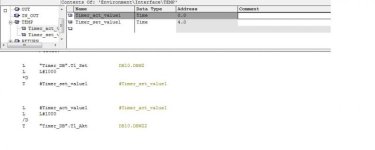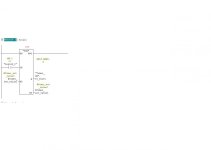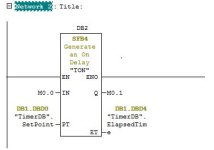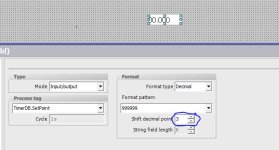Mars
Member
Hi,
I want to use a timer that i can read the set value for the timer from a DB (because of OP). The regular Siemens timers seem to be too stupid for this assignment as we only can set the set value "on" the timer in the software.
So in this DB i want to set the timer, read the actual value of timer and send the result 1/0 to the DB for using the bits to activate functions.
I want to use a timer that i can read the set value for the timer from a DB (because of OP). The regular Siemens timers seem to be too stupid for this assignment as we only can set the set value "on" the timer in the software.
So in this DB i want to set the timer, read the actual value of timer and send the result 1/0 to the DB for using the bits to activate functions.
Last edited:











